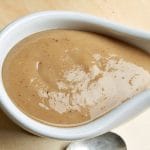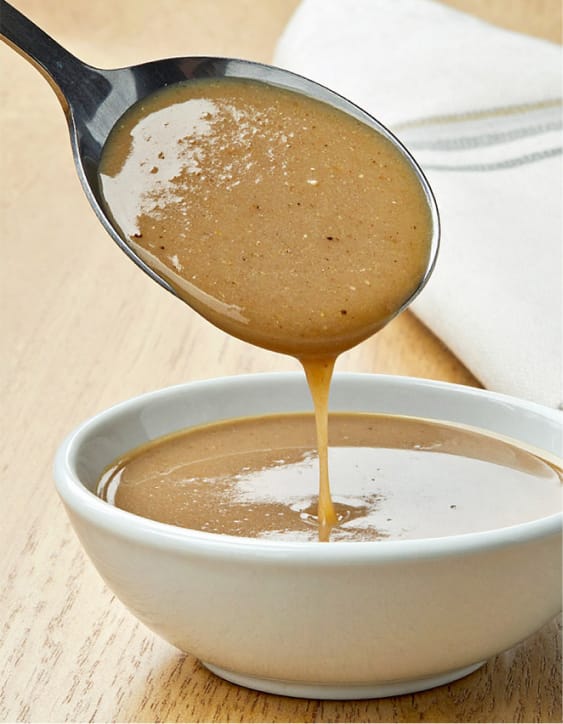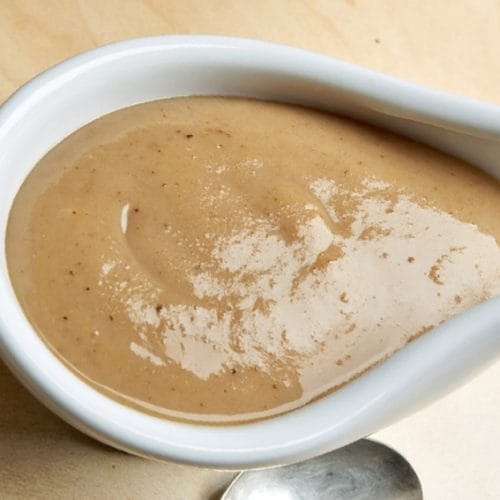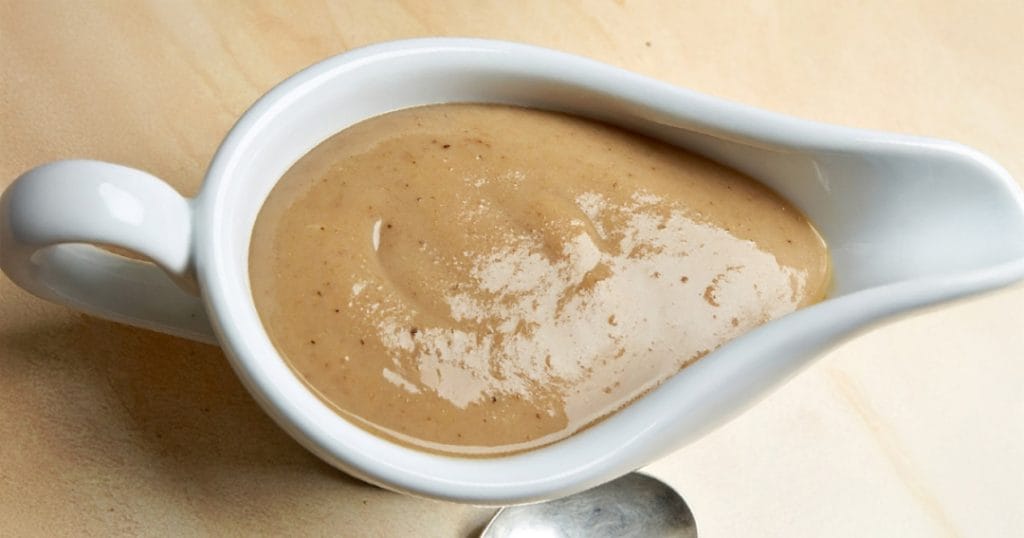
Turkey gravy is one of my favorite holiday sauces. If you’re looking for a silky, deeply savory sauce that ties your whole Thanksgiving or festive meal together, you’re in for a treat. Let me walk you through everything you need to know about classic homemade turkey gravy.
Contents
Turkey Gravy Recipe
Turkey gravy is a luscious, velvety sauce made from the drippings of a roasted turkey with flour, butter, and stock. It is a staple accompaniment to turkey meals, especially during the Thanksgiving holiday.

This sauce adds moisture and flavor to the turkey and other dishes on the plate. You can enrich the gravy with fresh herbs like thyme, sage, or parsley, along with a hint of black pepper for added balance. Some versions don’t use the drippings but use other ingredients like butter, flour, stock, and herbs to mimic the flavor.
You can pour the gravy over slices of roast turkey and mashed potatoes. It brings stuffing or dressing to life, and can transform a simple batch of buttered egg noodles into a cozy treat. The dish pairs wonderfully with green bean casserole or soft, fluffy dinner rolls.
Beyond the main plate, turkey gravy is a star on leftovers. You can drizzle it over an open-faced turkey sandwich for a hearty lunch, or use it to moisten a turkey pot pie packed with vegetables.
A side of roasted carrots, sweet potatoes, or Brussels sprouts is also a great choice. The gravy even elevates biscuits or breakfast hash.
Here’s how to make the turkey gravy

Easy Turkey Gravy
Nutrition
Ingredients
- 2 cups turkey drippings from roasted turkey
- 2 cups low-sodium chicken or turkey broth
- 1/4 cup all-purpose flour
- 2 tablespoons unsalted butter optional, for extra richness
- Salt and pepper to taste
- Optional: 1/2 teaspoon poultry seasoning or fresh herbs thyme, sage
Instructions
- Pour turkey drippings into a medium saucepan, skimming off excess fat if desired.
- In a separate small pan, melt butter and whisk in flour. Cook 1–2 minutes over medium heat until golden and fragrant.
- Slowly whisk in drippings and broth into the roux, stirring constantly to prevent lumps.
- Bring to a gentle boil, then reduce heat and simmer 5–10 minutes until thickened.
- Add salt, pepper, and optional herbs to taste. Serve hot.
Notes
- For a gluten-free version, use cornstarch instead of flour.
- Can be made ahead and reheated gently, adding a splash of broth if needed.
- Adjust seasoning based on the saltiness of your drippings.
Variations
Here are some fun twists and variations of this turkey gravy recipe you can try.
- Herb-Infused Turkey Gravy infuses the simmering broth with fresh or dried herbs like thyme, sage, parsley, and rosemary, for an extra layer of fragrance and earthy flavor.
- Giblet Gravy uses simmered turkey giblets (neck, heart, and liver) that are finely chopped and stirred into the finished sauce, creating a heartier, more traditional style.
- Make-Ahead Gravy skips the pan drippings and uses butter, broth, and a handful of aromatics (like shallots or garlic), allowing you to prepare and freeze it days in advance.

- Gluten-Free Version replaces the all-purpose flour with a gluten-free blend or cornstarch slurry.
- Vegetarian Gravy uses browned butter, vegetable broth, and sautéed mushrooms cooked until golden for the deep umami flavor, minus any meat.
- Spicy Version features a pinch of cayenne, black pepper, or even a splash of hot sauce for a lively, peppery kick that perks up any feast.
- Creamy Turkey Gravy incorporates a splash of cream or whole milk at the end, giving it a delicate richness and extra-silky texture.
- Lemon-Pepper Turkey Gravy brightens things up with fresh lemon zest or juice and plenty of cracked black pepper, for a zesty, uplifting spin.



